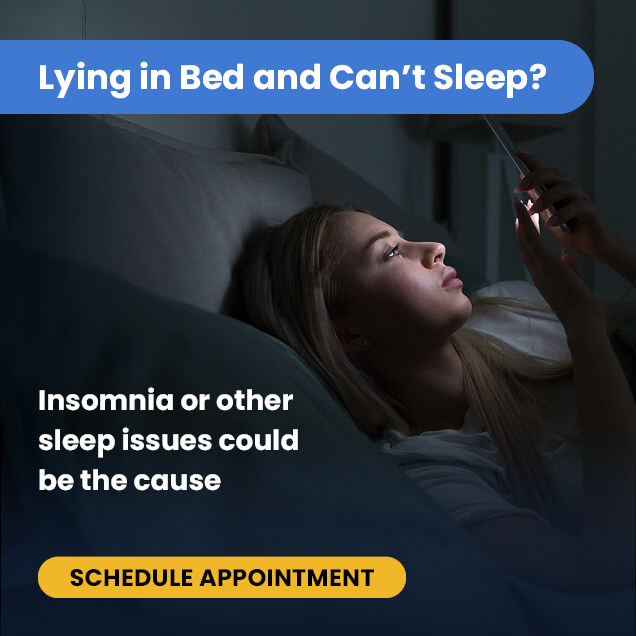Types of Enuresis | Epidemiology and Natural History | Pathogenesis | Causes | Evaluation | Management
Overview
The occurrence of nocturnal enuresis, or nighttime bedwetting, is not an uncommon event for children and is usually not a sign of a more significant issue.
Approximately 15 percent of children five years of age have episodes of nocturnal enuresis.[1]
Typically, the age of 5 is when nocturnal enuresis begins to be considered pathological, although events of enuresis can occur throughout childhood and adolescence.
Causes for some forms of nocturnal enuresis are not fully understood; however, there are management options available.
This article will look at nocturnal enuresis, evaluation, and how you can help your child manage the condition.
Types of Enuresis
For children ages five and older who suffer from nocturnal enuresis, there are two subtypes.
1) Monosymptomatic Enuresis
This type of nocturnal enuresis occurs without the co-occurrence of any other urinary tract malfunction. Monosymptomatic enuresis is divided into two subcategories:[2]
- Primary enuresis occurs when a child has consistent episodes of nighttime wetness. It’s the more common of the subtypes.
- Secondary enuresis occurs when a child has episodes of enuresis following at least six months without an episode. It’s usually associated with a highly stressful life event.
2) Non-Monosymptomatic Enuresis
In contrast to monosymptomatic enuresis, this type occurs along with urinary tract, bladder, or bowel dysfunction. Symptoms of non-symptomatic enuresis include:[3]
- Difficulty in daytime voiding
- Avoidance of voiding
- Urgency and incontinence
- Straining while voiding
- Pain in the lower urinary tract
- Fecal incontinence
Epidemiology and Natural History
Nocturnal enuresis is common in children ages five and older but is much more common in boys than girls.
The prevalence of nocturnal enuresis at age five is 15 percent and reduces by about 2-3 percent per year.
Nocturnal enuresis can resolve spontaneously, with children ages 15 and older having a prevalence of nocturnal enuresis of only 1-2 percent.[4]
Pathogenesis
Because nocturnal enuresis often resolves spontaneously, the evidence suggests that the majority of monosymptomatic nocturnal enuresis is due to a delay in development.
Evidence shows that children who have central nervous system-related delays, like speech and motor development, also have episodes of nocturnal enuresis.
The assumption here is that once the central nervous system matures, the connection between the brain and bladder becomes stronger, and nighttime bladder control becomes better.[5]
However, delayed maturation is not the only possible source of nocturnal enuresis. Other factors that could be the source of enuresis episodes include:
1) Genetic Factors
There seems to be some level of genetic predisposition associated with nocturnal enuresis.
A parent who has a history of bedwetting has a 50 percent chance of having a child with episodes of enuresis. The likelihood of the child having enuresis episodes increases to 75 percent when both parents have a history of nocturnal enuresis.[6]
2) Nocturnal Polyuria and Antidiuretic Hormone
Nocturnal polyuria is the abnormal production of urine throughout the night.
Children who suffer from nocturnal enuresis can have an increased level of urine production during the night.
While the increased urine output may be due to an increased intake of fluids before bed, it is more likely due to dysfunction with antidiuretic hormone (ADH).[7]
ADH is a hormone that controls the output of fluids from the body. Lower levels of ADH production and response are a suspected cause of nocturnal enuresis episodes.
3) Disturbed Sleep
Abnormal sleep patterns can also lead to nighttime voiding of urine; however, the evidence is inconclusive.
Occasionally, anecdotal and empirical reports of children with nocturnal enuresis are heavier sleepers and harder to rouse from sleep. Although, other studies report that these children sleep normally or even lighter than average.[8]
Regardless of the study’s findings, children with episodes of enuresis were always asleep just before or during the act of voiding.
4) Small Bladder Capacity
Children with nocturnal enuresis episodes have lower average bladder outputs than other children, but this isn’t due to a physically smaller bladder.
The children with nocturnal enuresis had trouble holding urine, which resulted in lower average output and is likely contributing to nighttime voiding.[9]
5) Detrusor Overactivity
The detrusor is the layer of muscle that surrounds the bladder. In children with nocturnal enuresis, there can be a lack of inhibition of this muscle, which could cause episodes of wetness.
The findings of these studies also suggest a combined lack of activity in the pelvic floor, which would allow the child to hold their urine, then wake to void.[10]
Causes
Some proposed causes of nocturnal enuresis in children include intellectual disability, autism, attention deficit hyperactivity disorder (ADHD), or disturbed sleep; however, these causes are still being studied.[11][12] Other conditions associated with nocturnal enuresis include:[13]
- Bladder Dysfunction
- Urinary Tract Infection (UTI)
- Chronic Kidney Disease
- Posterior Urethral Valves
- Ectopic Ureter in Girls
- Fecal Incontinence or Constipation
- Sickle Cell Disease
- Seizures
- Diabetes Mellitus and Diabetes Insipidus
- Spinal Dysraphism
- Obstructive Sleep Apnea (OSA)
- Pinworms
- Primary Polydipsia
Evaluation
The purpose of an evaluation in the context of nocturnal enuresis is to determine if there is an underlying cause of the nocturnal episodes.
The examination should include a history, physical examination, and urinalysis. In this case, the physician may ask specific questions to determine trends in nocturnal enuresis, including:[2]
- Amount of Liquid Consumed
- Number of Daytime Bowel Movements
- Number of Urinations
- Number of Nocturnal Enuresis Episodes per Week
- Family History
- Medical History
- Development and Behavior Questions
- Intervention History
The physician may conduct a physical examination to search for signs of renal disease, OSA, incontinence, constipation, pinworms, or spinal abnormalities. A urinalysis may also be performed to rule out the possibility of diabetes or UTI.
Management
The goal of managing nocturnal enuresis in children is to reduce the impact of enuresis, increase the number of dry nights, and allow for socializing (sleepovers).
Initial treatment includes the treatment of any associated dysfunctions. If there is no successful treatment of associated conditions, direct management of nocturnal enuresis is likely to be ineffective.
Motivational therapy is the first treatment step in children who are motivated to participate in the treatment process.
Rewards for progressive measures, such as voiding before bedtime, are given with the eventual goal of rewarding a child for waking and urinating during the night.[14]
Another method of treatment is the enuresis alarm, which senses moisture and wakes the child. The enuresis alarm is not immediately effective, taking several months to train a child to wake in response to the urge to void and finish voiding in the bathroom.
If, after three months, there is no improvement, additional therapy may be required.[15]
A medication called Desmopressin can be prescribed to reduce the number of enuresis episodes in the week. Desmopressin reduces the urine output and is given before bed to hold off urination until the morning. This medication has a higher level of relapse, which indicates it should be used in conjunction with an alternate treatment method.[16]
Conclusion
Nocturnal enuresis in children is a very common issue in children but is often not much of a concern.
Episodes of enuresis during the night often resolve on their own, without additional intervention. However, if you or your child feel that wetness episodes are impacting sleep, social activities, or psychological wellbeing, it is time to pursue treatment.
Treatment can be an effective means of reducing the number of enuresis episodes, resulting in better sleep and a higher quality of life. If you are ready to pursue treatment, reach out to your child’s physician and discuss the best options for decreasing episodes of nocturnal enuresis.
References:
- Fergusson, D. M., Horwood, L. J., & Shannon, F. T. (1986). Factors related to the age of attainment of nocturnal bladder control: an 8-year longitudinal study. Pediatrics, 78(5), 884–890. https://pubmed.ncbi.nlm.nih.gov/3763302/
- Neveus, T., Eggert, P., Evans, J., Macedo, A., Rittig, S., Tekgül, S., Vande Walle, J., Yeung, C. K., Robson, L., & International Children’s Continence Society (2010). Evaluation of and treatment for monosymptomatic enuresis: a standardization document from the International Children’s Continence Society. The Journal of urology, 183(2), 441–447. https://doi.org/10.1016/j.juro.2009.10.043
- Nevéus, T., von Gontard, A., Hoebeke, P., Hjälmås, K., Bauer, S., Bower, W., Jørgensen, T. M., Rittig, S., Walle, J. V., Yeung, C. K., & Djurhuus, J. C. (2006). The standardization of terminology of lower urinary tract function in children and adolescents: report from the Standardisation Committee of the International Children’s Continence Society. The Journal of urology, 176(1), 314–324. https://doi.org/10.1016/S0022-5347(06)00305-3
- Forsythe, W. I., & Redmond, A. (1974). Enuresis and spontaneous cure rate. Study of 1129 enuretis. Archives of disease in childhood, 49(4), 259–263. https://doi.org/10.1136/adc.49.4.259
- Michel R. S. (1999). Toilet training. Pediatrics in review, 20(7), 240–245. https://doi.org/10.1542/pir.20-7-240
- Bakwin H. (1971). Enuresis in twins. American journal of diseases of children (1960), 121(3), 222–225. https://doi.org/10.1001/archpedi.1971.02100140088007
- Aikawa, T., Kasahara, T., & Uchiyama, M. (1998). The arginine-vasopressin secretion profile of children with primary nocturnal enuresis. European urology, 33 Suppl 3, 41–44. https://doi.org/10.1159/000052242
- Wolfish, N. M., Pivik, R. T., & Busby, K. A. (1997). Elevated sleep arousal thresholds in enuretic boys: clinical implications. Acta paediatrica (Oslo, Norway : 1992), 86(4), 381–384. https://doi.org/10.1111/j.1651-2227.1997.tb09027.x
- Troup, C. W., & Hodgson, N. B. (1971). Nocturnal functional bladder capacity in enuretic children. Wisconsin medical journal, 70(7), 171–173. https://pubmed.ncbi.nlm.nih.gov/5560232/
- Yeung, C. K., Chiu, H. N., & Sit, F. K. (1999). Bladder dysfunction in children with refractory monosymptomatic primary nocturnal enuresis. The Journal of urology, 162(3 Pt 2), 1049–1055. https://pubmed.ncbi.nlm.nih.gov/10458430/
- Mellon, M. W., Natchev, B. E., Katusic, S. K., Colligan, R. C., Weaver, A. L., Voigt, R. G., & Barbaresi, W. J. (2013). Incidence of enuresis and encopresis among children with attention-deficit/hyperactivity disorder in a population-based birth cohort. Academic pediatrics, 13(4), 322–327. https://doi.org/10.1016/j.acap.2013.02.008
- Niemczyk, J., Wagner, C., & von Gontard, A. (2018). Incontinence in autism spectrum disorder: a systematic review. European child & adolescent psychiatry, 27(12), 1523–1537. https://doi.org/10.1007/s00787-017-1062-3
- Ullom-Minnich M. R. (1996). Diagnosis and management of nocturnal enuresis. American family physician, 54(7), 2259–2271. https://pubmed.ncbi.nlm.nih.gov/8940959/
- Nevéus, T., Fonseca, E., Franco, I., Kawauchi, A., Kovacevic, L., Nieuwhof-Leppink, A., Raes, A., Tekgül, S., Yang, S. S., & Rittig, S. (2020). Management and treatment of nocturnal enuresis-an updated standardization document from the International Children’s Continence Society. Journal of pediatric urology, 16(1), 10–19. https://doi.org/10.1016/j.jpurol.2019.12.020
- Caldwell, P. H., Codarini, M., Stewart, F., Hahn, D., & Sureshkumar, P. (2020). Alarm interventions for nocturnal enuresis in children. The Cochrane database of systematic reviews, 5(5), CD002911. https://doi.org/10.1002/14651858.CD002911.pub3
- Glazener, C. M., & Evans, J. H. (2002). Desmopressin for nocturnal enuresis in children. The Cochrane database of systematic reviews, (3), CD002112. https://doi.org/10.1002/14651858.CD002112






